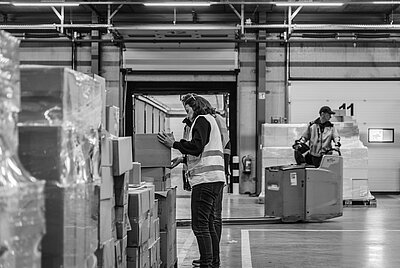Big brands: smaller inimate experiences
C&IT’s ‘Connected Retail 2023’ report shows that there is little difference in the rates of consumers shopping on digital and physical channels. What does this say about the value of the store? It’s now perfectly balanced with online – but perhaps, it isn’t being valued in the ways it was pre-2020.
Swedish home store, IKEA, has been learning from the shifts of customers’ expectations and convenience since the pandemic. Realising that for many customers, large IKEA stores are either inconvenient to get to or an exhausting experience, it has begun opening smaller format stores in cities like London and Copenhagen.
This approach allows for customers to order online and collect in locations that are much more convenient. It also focuses on creating a customer experience that is in demand, with where its customers are. With less large furniture available to buy and more soft furnishings, accessories and a deli open in time for commuter hours, it creates the perfect personalised store experience for customers who don’t need large pieces of furniture or who haven’t got the time or inclination for a long shop.
Describing London’s first micro-IKEA store, Peter Jelkeby, country retail manager and chief sustainability officer at IKEA UK and Ireland, said: “For the first time, Londoners will be able to take the tube to an IKEA store, pop in, grab a yellow bag and buy all the home furnishing accessories that make a house a home. They will also be able to explore the whole range, for delivery to a convenient collection point or directly to their home.”
Learn from loyalty programmes
Digital marketing and ecommerce experts Econsultancy, says that: “An omnichannel loyalty program should offer value across the entire shopper journey, stemming from the analysis of customer data such as purchase history, preferred channels, and demographics.”
With recent research showing that consumers are tired of loyalty reward schemes, and 96% of them wanting loyalty schemes to do more than simply offer points when they shopped, moving away from a formulaic loyalty programme is a way to embed a seamless omnichannel approach. Finnish natural beauty and health products retailer, Ruohonjuuri, has taken this approach to loyalty programmes seriously.
At Ruohonjuuri, customers collect pinecones (instead of points) in several different ways – all of which blend the customer experience across their platforms. Customers receive cones when they shop in store or online, when they create an online account, when they follow the Ruohonjuuri Instagram account, when they leave a product review and add images or videos to those reviews.
It's an incredibly clever way of rewarding customers across multiple touchpoints, creating and amplifying a seamless brand experience while collecting data and user generated content that builds its brand profile.
With brands large and small taking omnichannel experience seriously, now is the time to review your customer data and evaluate your next steps to continue to offer an omnichannel experience that’s leagues ahead – and as futureproofed as it can be.
If you’re ready to build a seamless omnichannel experience, speak to our team on +31 (0) 88 494 20 80 or email us at online@worldpack.eu


